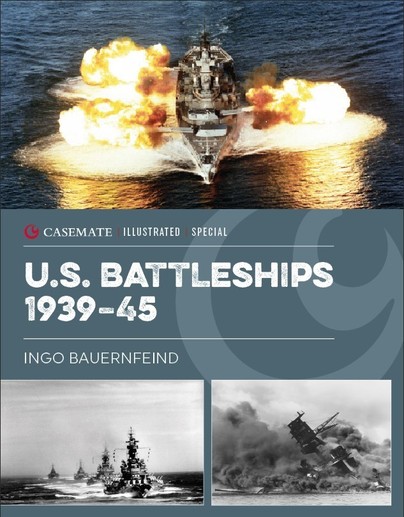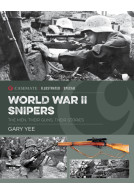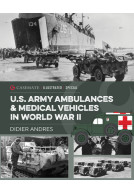U.S. Battleships 1939–45 (Hardback)
Series: Casemate Illustrated Special
Pages: 240
Illustrations: B/w and colour images
ISBN: 9781636242569
Published: 30th June 2024
(click here for international delivery rates)
Order within the next 26 minutes to get your order processed the next working day!
Need a currency converter? Check XE.com for live rates
For nearly half a century, the battleship was the most powerful weapon on the ocean, deployed by the US Navy and many other fleets. However, their time seemed to be at an end when Japanese carrier-based aircraft destroyed so many at Pearl Harbor in 1941, ushering in the age of the aircraft carrier. Nevertheless, US battleships continued to serve with distinction in various roles throughout World War II and during the Cold War.
Naval historian Ingo Bauernfeind tells the dramatic yet successful story of the US Navy’s battleships and battle cruisers by class, ranging from the early Dreadnought-type of the South Carolina-class to the gigantic Montana-class, which were approved but never built. This fully illustrated volume gives a clear overview of each ship’s career, its fate and highlights its significance in American naval history. Besides covering various battles in the Pacific, it also describes the important actions of US battleships providing shore bombardment during the invasions of Iwo Jima and Okinawa as well as during the D-day landings in Normandy, thus illustrating their contribution to Allied victory in World War II. Moreover, it covers the little-known actions of the Iowa-class during the Korean and Vietnam wars and even during Operation Desert Storm in 1991, when the modernised USS Missouri and USS Wisconsin fired guided missiles and operated drones in addition to the use of their historic 16-inch guns.
This volume culminates in a guided tour through the mighty USS Missouri, an overview of the other seven preserved US battleships serving as floating museums for future generations, as well as a dive to the sunken USS Arizona and USS Utah at Pearl Harbor.
A recent addition to the Casemate Illustrated Special series. A 240-page hard-cover book.
Military Model Scene
After a neat introduction, the book is divided across 8 chapters. It tackles the topic in a simple chronological sequence, from the background of the pre-dreadnought era and on to the change driven by the appearance of the Royal Navy's HMS Dreadnought itself. The book takes us through the detail of all 11 classes of US Navy battleship, and the 1 of battlecruisers. Each class is covered, with the development stories, including the context of what other battleships were being built by other countries such as Great Britain, Japan, and Germany. Each class is then described covering elements such as armament, armour protection, propulsion systems, radars and so on. We also get their individual service stories. It became an arms race, with ever increasing size to their main armament. There are of course a lot of super archive images, plus some diagrams showing detail such as the arrangement of the torpedo protection belts for the hull. Some of the early classes also featured torpedo tubes in the hull, below the waterline.
Famously, a group of these battleships were moored in Pearl Harbor in December 1941, when the Japanese attacked. It does of course cover the ones which were sunk or damaged, and those which were raised/repaired and put back into service. There were 2 that were not recovered of course, not only the Arizona, but also the older battleship, USS Utah, and both of these remain as memorials in the water around Ford Island in Pearl Harbor to this day. There is a good account of the story of the Utah, as there is an account of those who have dived on the wreck of the Arizona, which still contains the bodies of so many of her crew. The Iowa class of battleships were the last ones to remain in service, right up to the Gulf War. Now kept as museum ships, the USS Missouri is kept in Pearl Harbor and there is one chapter containing a photo tour of her today.
The stories of these battleships is fascinating, including the context of their international contemporaries. There are the limitations imposed by the Washington and later London treaties to be taken into account, as well as the simple matter of costs. Design factors evolved over time, from coal powered steam engines to later oil powered ships. Engagement in the war also led to the necessary changes in anti-aircraft protection, and the sheer numbers of weapons fitted is not just staggering, but the fact these ships were big enough to accommodate them. There was a regular series of refits/changes to these ships over the years, some fitted with modern cruise missile systems that saw them in action through Vietnam, the Cold War and on to the Gulf War of 1991. I really enjoyed this book, in both the text and the collection of photos. I am also lucky enough to have visited Pearl Harbor and seen the Missouri, the Arizona Memorial and the wreck of the Utah, so felt myself remembering some of that emotion I felt when we visited that famous battleground.





















